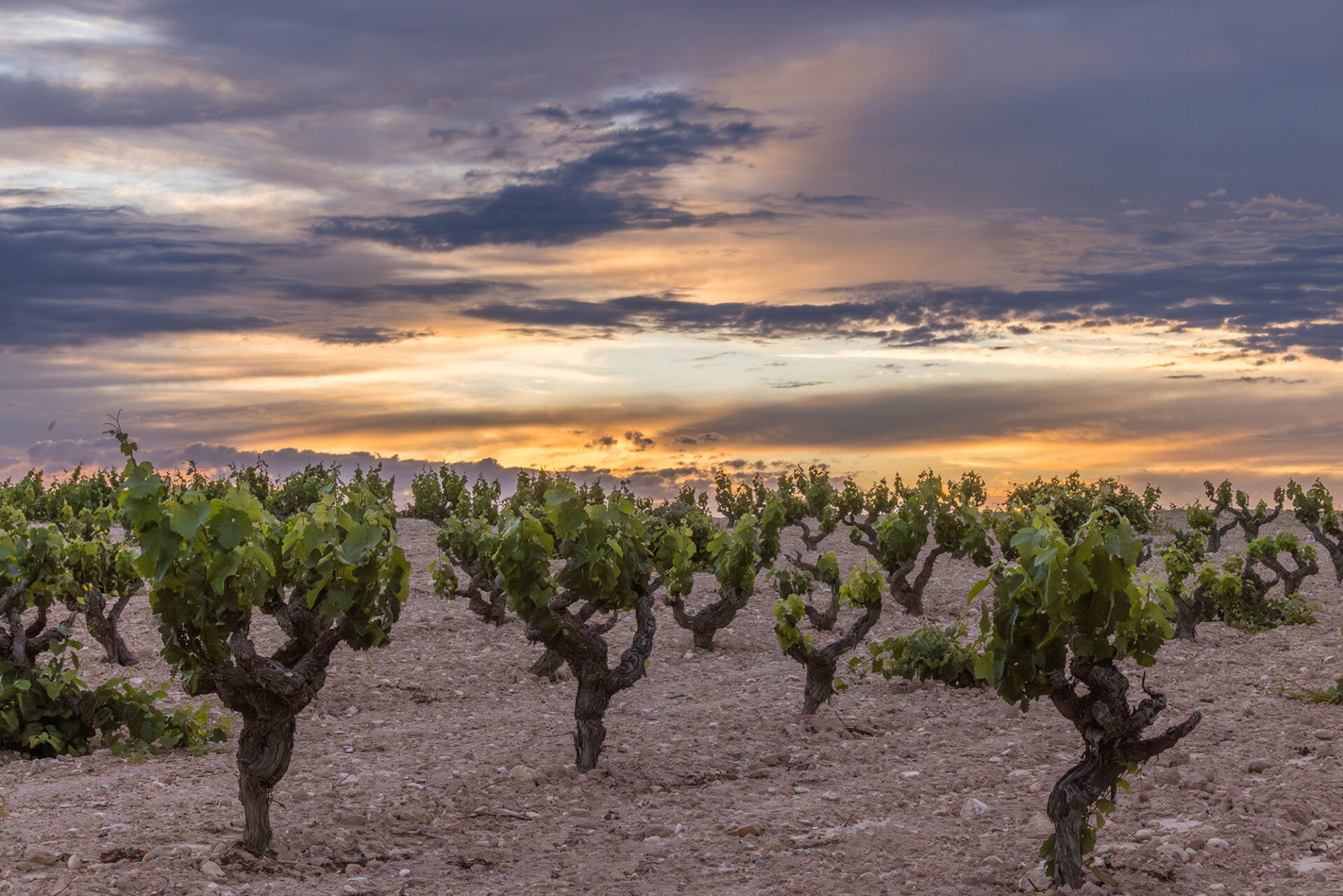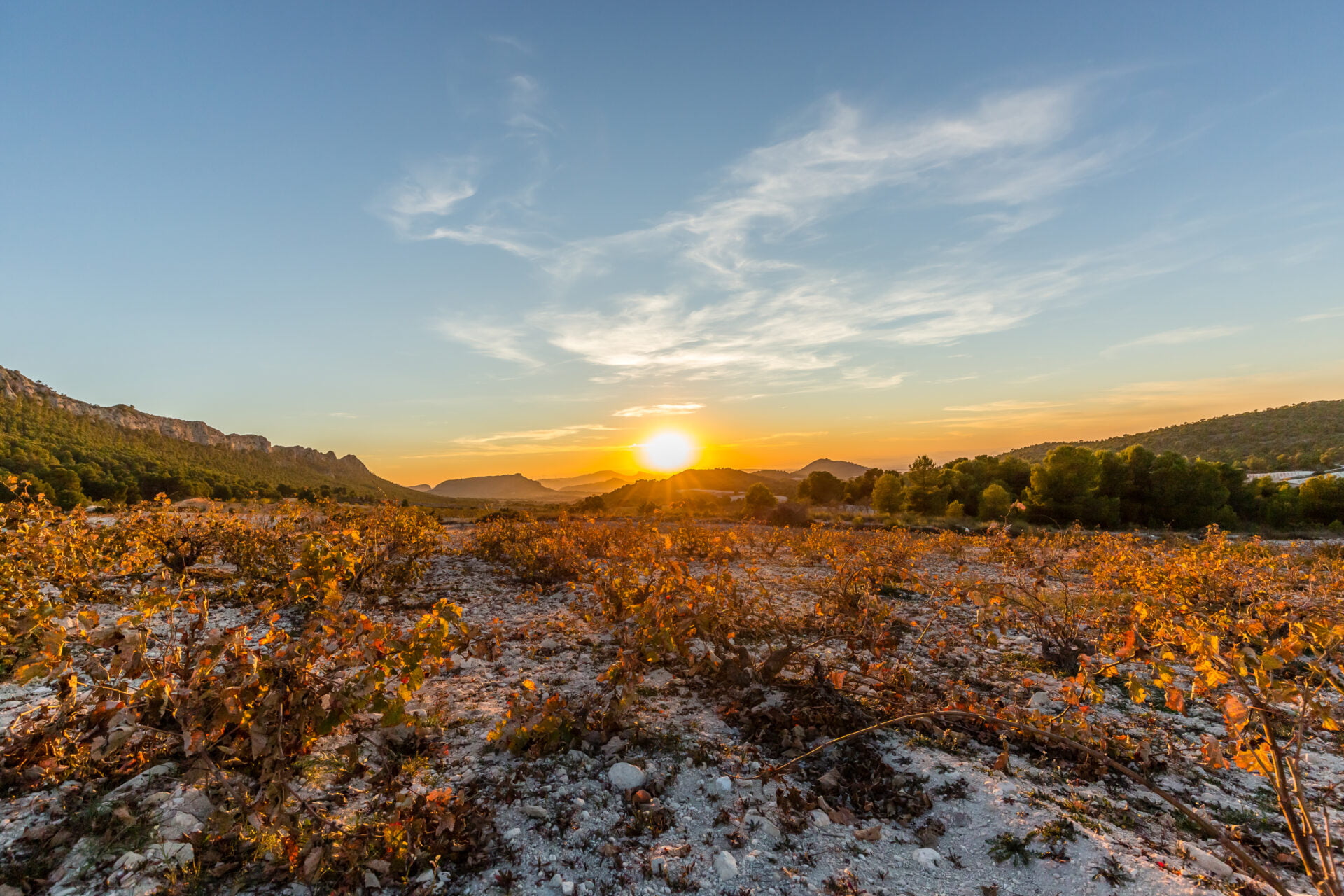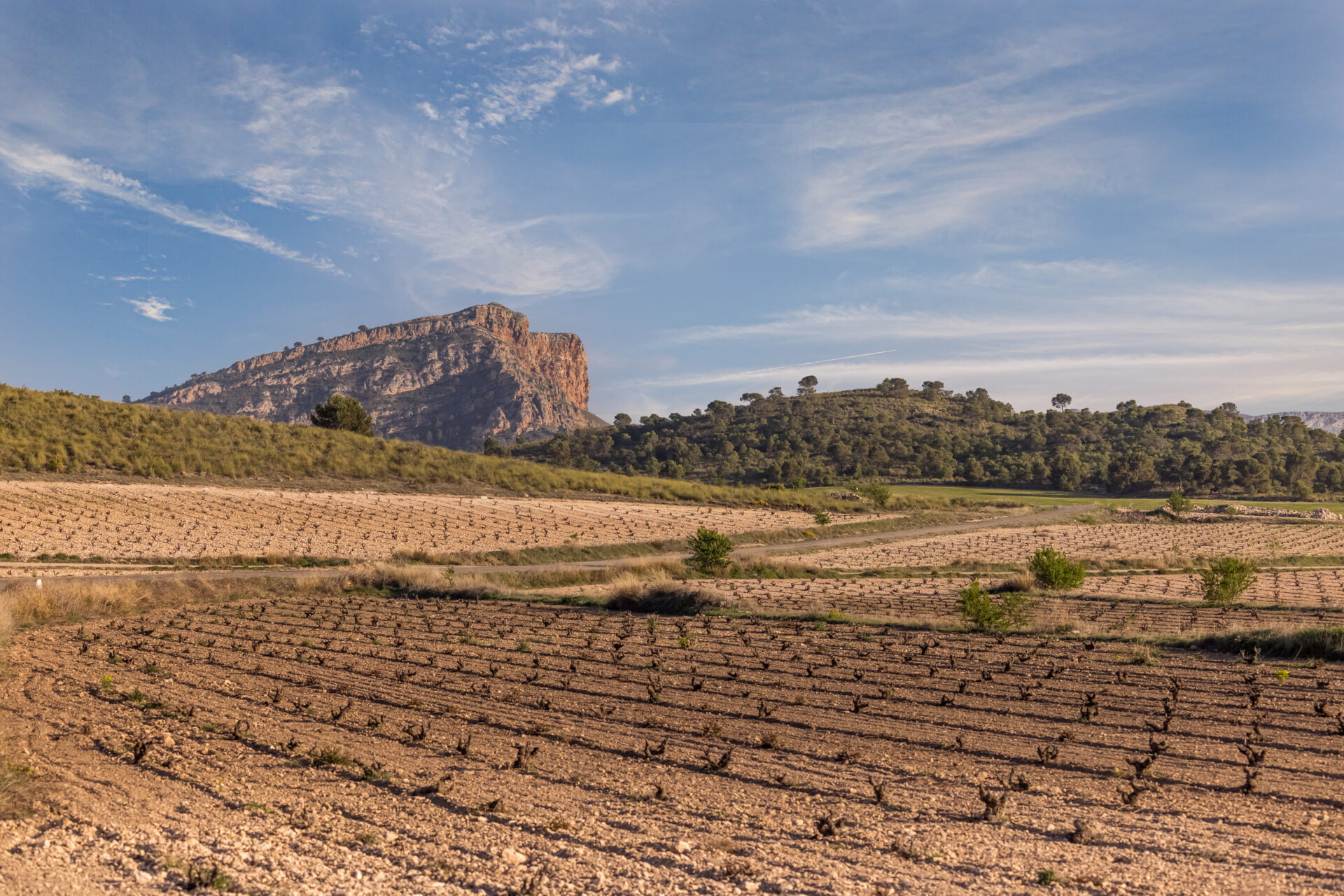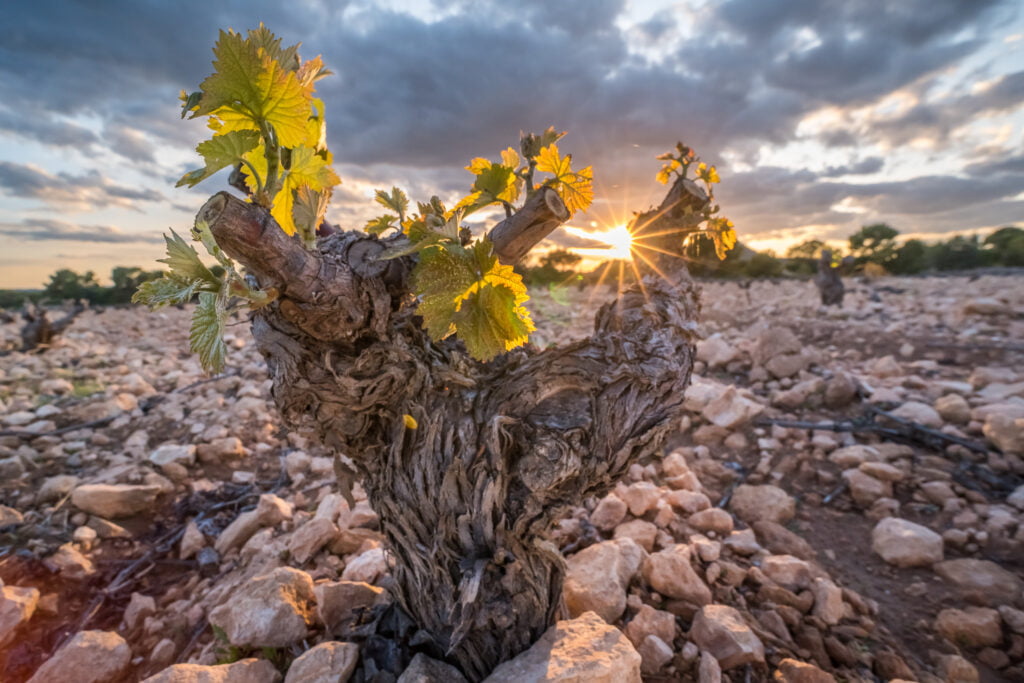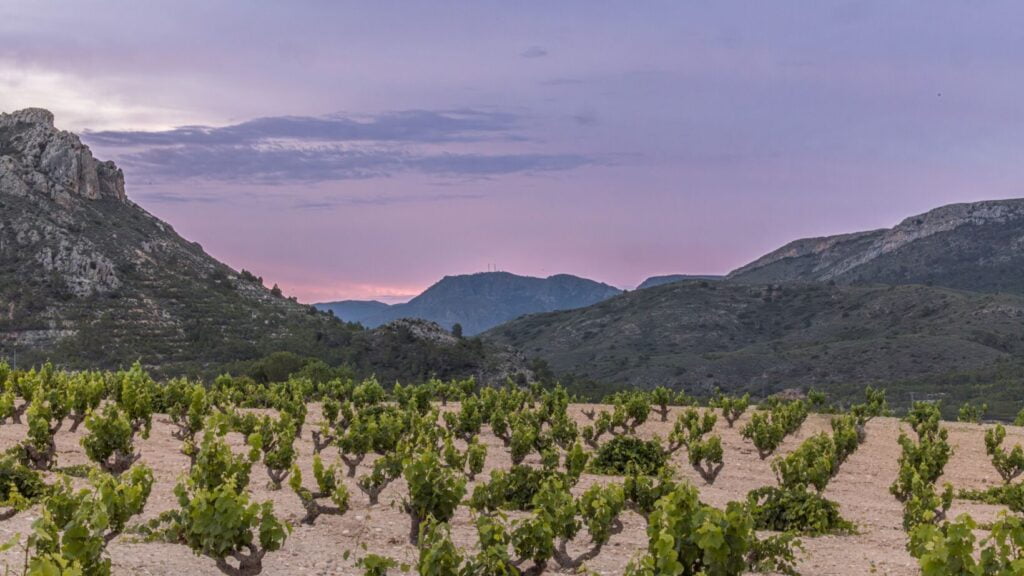OUR VINES
ECO-FRIENDLY JUMILLA VINE-GROWING
Old ungrafted vines in near-perfect conditions for organic growing.
With less than 300mm annual rainfall and over 3,000 hours of sunshine a year, the Jumilla wine region offers near-perfect conditions for organic vine-growing, so much so that most Jumilla vine-growers have only ever practised eco-friendly viticulture.
The appellation’s dry, sunny, high plateau terroir largely spares the vines from disease. Even phylloxera struggled to get a foothold in these parts and never penetrated the higher rocky terroirs at all.
The vineyard area registered in the Jumilla DOP in 2023 forms a total of approximately 20,000 hectares of vineyards.
The approximate distribution of this area is: 95% corresponds to authorized red varieties and 5% to white grape varieties. Whilst of the total vineyard, 70% is Monastrell grape.
The registered vineyard area of the Jumilla Protected Designation of Origin is approximately 20,000 hectares. The DOP production area includes territories of notable altitude, with vineyard plantations extending from 320 meters to 1,000 meters.
The cultivation is mostly dry farmed and in bush formation (75%), being the traditional management and better adapted to the harsh climatic conditions of the region. Furthermore, the Jumilla DOP has a strong organic vocation, with more than 75% of the surface certified.
This region is a world reservoir of old vineyards, more than 20% of the vineyard is more than 30 years old, and includes about 1,000 hectares of ungrafted vines.
Miserly rainfall
Low rainfall means that yields are naturally low. While other rainier regions may resort to green harvesting in order to bring down yields for higher quality, Jumilla has the lowest natural yields per hectare of any wine region in the world. As a result, its vineyards are planted at very low density to prevent the vines from suffocating.
In such conditions, we might expect climate change to be a threat, and yet this isn’t the case. The vast majority of Jumilla’s vineyards (around 79%) are dry-farmed. The combination of Monastrell’s resilience as a plant and Jumilla’s deep, cool, rocky, limestone soils, which cover most of the region, enables the vines to find moisture deep underground and survive without irrigation.
The vast majority of Jumilla’s vineyards
(around 79%) are dry-farmed.
Dry-farmed, old-vine Monastrell
A huge proportion of Jumilla’s vineyard is made up of old vines, mostly low bush vines, which ensure shade and relative coolness for the fruit. Amazingly, some 1,000 hectares of these are ungrafted and at least 50 years old, dating back to a time before grafting became compulsory. At lower altitudes, many vineyards are strategically planted on shady north- facing slopes to preserve balance and freshness in the wines.
While trends in grape variety and wine style may come and go, the realities of farming in Jumilla remain the same, and water remains a precious commodity. Traditionally, Jumilla farmers have grown olives, almonds and grapes. For centuries they have devoted what water they had to their olive groves and almond trees, knowing that their vines could manage without irrigation. It is perhaps due to this ancestral knowledge that the vineyards of Jumilla, one of the driest areas of Spain, are still largely dry-farmed.
Making it even more challenging for this variety, Monastrell has a long drawn-out vine cycle. While Tempranillo sets off late and then races through the season, the largely organically-grown Monastrell buds in March and is still ripening at the end of October.
A HUGE PROPORTION OF JUMILLA’S VINEYARD IS MADE UP OF OLD VINES
Discover the wine making region of Jumilla
GRAPES
learn jumilla’s Grape varieties
TERROIR
DISCOVER AN EXCEPTIONAL VINE-GROWING LAND
WINEMAKING
WHERE TRADITION AND MODERNITY COME TOGETHER
WINE PROFILES
DISCOVER THE RANGE OF WINES

